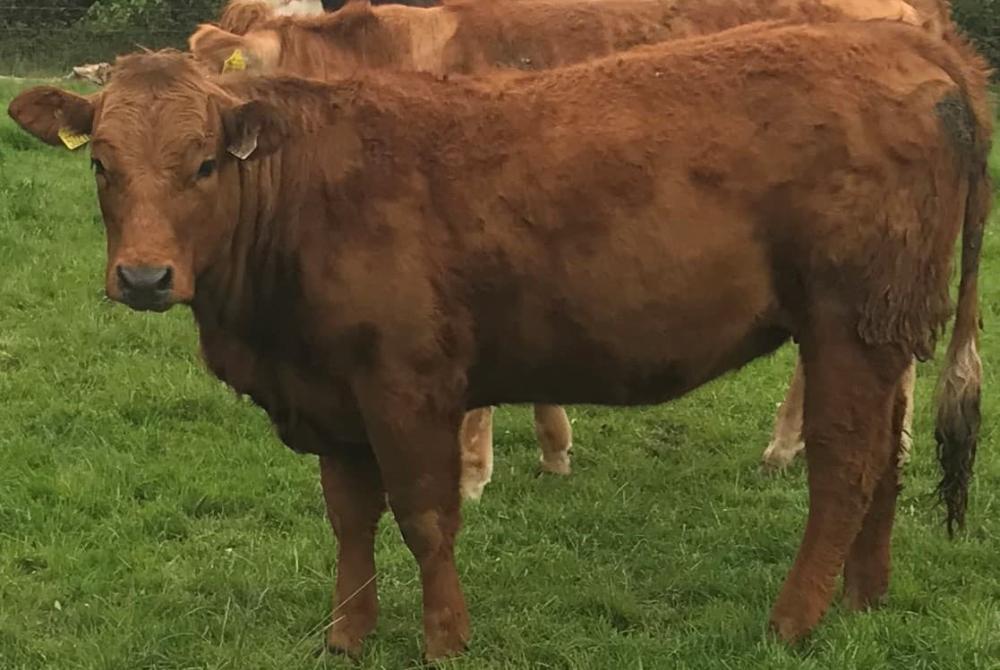Selecting Beef Heifers for Breeding
Selecting Beef Heifers for Breeding 28 April 2023 Type Media Article By Colm Kelly, B&T Drystock Adviser, Teagasc, Galway/Clare The breeding of suckler cows is changing significantly. Like many changes it is slow at first and then a lot happens very quickly. The new Suckler Carbon Efficiency Programme (SCEP) and climate targets are placing an […]
By By Colm Kelly, B&T Drystock Adviser, Teagasc, Galway/Clare
Selecting Beef Heifers for Breeding
Type Media Article
By Colm Kelly, B&T Drystock Adviser, Teagasc, Galway/Clare
The breeding of suckler cows is changing significantly. Like many changes it is slow at first and then a lot happens very quickly. The new Suckler Carbon Efficiency Programme (SCEP) and climate targets are placing an ever keener emphasis on breeding efficient animals. Efficiency isn’t always flashy and can be unseen in the field such as fertility and weaning weight traits. While there are significant challenges facing agriculture and society in the coming decades as climate targets are committed to, there will also no doubt be opportunities. A key strategy in the coming years for farmers is to position themselves to navigate the coming challenges and prosper. There is a lot of talent involved in suckler farms with most working off farm either for others or for themselves. The abilities shown in work are transferrable skills to make significant changes to a farm business and move agriculture towards meeting its climate obligations. In this article I am discussing selecting breeding heifers and equating it to hiring an employee to engage peoples business mind-set.
Eurostar index: A heifers CV
This is an opportunity to pick through the field and decide which heifers to put forward for interview. Firstly identify heifers that are 5 star. The star ratings are a visual representation showing the top 20% for predicted performance or trait as 5 star and the top 40% as 4 star. These hinge on a monetary value index and the higher the monetary value the higher a heifer is rated. Pay particular attention to the sub index’s for ‘daughter calving difficulty’, ‘milk kgs’ and ‘daughter calving interval’ as indicators of predicted performance for key reproductive traits. Compare the sub index rating figure to the breed average to identify animals with a higher predicted performance ceiling. The ancestry breakdown is also a good opportunity to put a bit of nepotism into practice. Heifers out of strong performing parents on maternal traits is a further layer of information to inform the selection process. Genotyping increases the accuracy of an animals Eurostar index by identifying genes associated with beneficial production traits. After this process you should have a shortlist of heifers to interview.
Weight targets: Tell me about yourself?
The weight targets are 60% of mature weight at mating. This is important to ensure heifers are cycling and is a good indicator that they can achieve a decent level of maturity by calving. Calving at 2 years remains stubbornly low nationally. The inefficiencies of not calving at 2 years are twofold. It’s the business equivalent of taking on someone and leaving them in the canteen with nothing to do for 6-12 months. It is also a negative for carbon efficiency as during these unproductive periods the animal is generating emissions but no product.
Docility: Team working skills
We all know a few very capable people that no one can work with. If the heifer has issues with authority figures there is no point taking her on. Docility is a key part of overall herd management and safety. A herd that is easy to get in and handle has enormous unseen value particularly where farmers are working alone. An animal that is manageable at critical points for health and safety throughout the year whether that be loading, at calving or when in for routine treatments is of huge value.
Functionality: Ability to perform under pressure
The basics of ‘stockpersonship’ are still as important as ever. Check the heifer nose to tail for functional faults. Assess also the heifer’s ability to calve easily and for conformation traits that will combine with the bull used to produce the desired offspring for the system in operation.
Weanling or Finishing: Suitability to role
Selling through a mart or direct to an abattoir can have a significant impact on breeding decisions made. Success in mart sales is dependent on the biases of the purchaser who combines weight and age information with their own personal preferences when making a decision. It is a regular feedback from weanling producers that they feel these biases can lead to some efficiently produced animals not realising the top of the market returns due to coat colour or breed makeup etc. Finishing direct to a factory is more analytical in that payment is based on weight and carcase spec which allows breeders to focus on meeting those targets. It is important that market breeding decisions are taken in combination with the breeding efficiency criteria regardless of market targeted.
Key Points:
- Use Eurostar index to create shortlist
- Target calving at 2 years of age
- Check docility and functionality
- Efficiency important regardless of market
| Selection Checklist | |
|---|---|
| Eurostar Index | √ |
| Weight Target | √ |
| Docility | x |
| Functionality | √ |
| Market Targeted | √ |

Picture 1. Aubrac x Saler heifer replacement index 5 star €207: Potential employee
